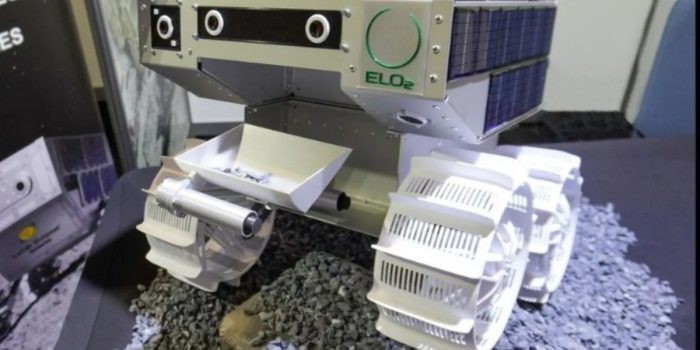The Australian consortium ELO2 has unveiled a prototype lunar rover, marking a significant step forward in Australia’s participation in space exploration. This unveiling took place at the 16th Australian Space Forum on December 6, where the rover was presented for the first time to gather feedback and suggestions for further enhancements.
The ELO2 consortium is part of the Australian Space Agency’s (ASA) Moon to Mars Trailblazer program, a $150 million initiative resulting from a 2021 deal between NASA and ASA, aiming to include an Australian-made, semi-autonomous rover in NASA’s Artemis lunar mission.
ELO2, led by EPE Trusted to Protect and Lunar Outpost Oceania with 14 partners, has been selected as one of the two firms to develop a rover prototype under the Trailblazer program. The chosen firms will receive $50 million collectively to design and build a small rover. If successful, the ELO2 rover will be tasked with transporting lunar regolith or soil to a designated facility for analysis and oxygen extraction.

The Trailblazer rover draws on the consortium’s experience in developing the Lunar Outpost MAPP Rover, a lunar rover tailored for commercial Lunar Surface Mobility. Notably, the prototype heavily relies on innovative 3D printing techniques, with a particular emphasis on Titomic’s expertise in metal additive manufacturing.
Titomic’s Cold Spray process, known as Titomic’s Kinetic Fusion Additive Manufacturing, enables the creation of high-performance components with on-demand coatings or repairs, making it suitable for aerospace, automotive, defense, and mining applications.
The MAPP rover is touted for its impressive capabilities, covering over 2 kilometers with payloads, maintaining an average speed of 1.7 cm/s, and reaching a maximum speed of 10 cm/s. Lunar Outpost’s experience with the MAPP rover provides valuable insights and risk mitigation for the Trailblazer Program.
Concurrently, Lunar Outpost is involved in a second mission supported by NASA’s PRISM program, targeting the equatorial Reiner Gamma lunar region in 2024, providing additional risk reduction through heritage and operational insights.

The primary mission of the Trailblazer lunar rover involves transporting lunar regolith to the In-Situ Resource Utilization (ISRU) facility on the Moon’s surface. This includes conducting environmental surveys, identifying and gathering regolith, transporting it to the specified delivery zone, and depositing it at the ISRU facility.
The rover is expected to enhance its autonomy over time and acquire knowledge from its surroundings through repeated tasks. Additionally, it will perform various tasks such as loading and unloading regolith, constructing regolith stores, remote asset inspection, surface preparation, and end-of-life tasks.
Another consortium, Australian Remote Operations for Space and Earth (AROSE), is also working on developing a similar prototype as part of the Trailblazer program. In the initial phase, each consortium received $4 million for the development of their respective rover prototypes. The success of these prototypes is crucial not only for the participating Australian firms but also for the broader collaborative efforts in space exploration between Australia and NASA.


